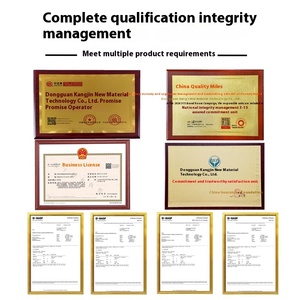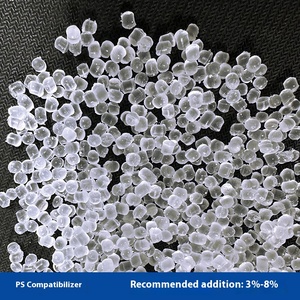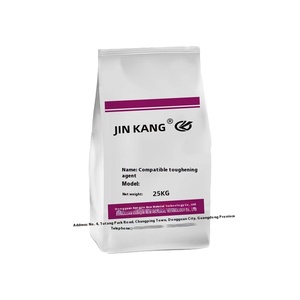
All categories
Featured selections
Trade Assurance
Buyer Central
Help Center
Get the app
Become a supplier

(929 products available)










































Sulphonate melamine superplasticizer is a chemical admixture used in cement mixtures to improve workability and reduce water content. It is a popular choice in the construction industry because it is cost-effective and produces high-strength concrete. Its types include:
Calcium Sulfonate Superplasticizers:
These are the oldest types of superplasticizers. They are well-known for their excellent workability, high flow, and water resistance. They are used in the construction of hydraulic structures, precast concrete, and mass concrete foundations. They are compatible with different types of cements and have a low rate of calcium precipitation.
Melamine Sulfonate Superplasticizers:
These types of superplasticizers have a high water reduction capacity. They are used in the construction of high-strength concrete, self-compacting concrete, and early-strength concrete. They are compatible with various types of Portland cement. They offer long-lasting workability and are resistant to temperature changes.
MEL-SNA Superplasticizers:
They are the latest superplasticizers. They combine the benefits of calcium sulfonate and melamine sulfonate superplasticizers. They are widely used for their excellent workability, high flow, and low slump loss. They are used in the construction of high-performance concrete, high workability concrete, and durable concrete. They provide high water reduction and improve concrete's resistance to segregation and bleeding.
Melamine formaldehyde resin is the basis of sulphonate melamine superplasticizers. The substances are mixed with water and sodium hydroxide to produce a sulfonic acid polymer.
Sulphonate melamine superplasticizer is used in various construction projects and civil engineering applications. Here are some key usage scenarios:
High-Strength Concrete
Superplasticizers are used to make high-strength concrete with a compressive strength of up to 80 MPa or more. This concrete is used in construction projects that require a lot of strength, like bridges, parking lots, and high-rise buildings.
Reducing Water Content
These superplasticizers reduce the water content in concrete mixes without reducing workability. This leads to stronger concrete with less water-cement ratio. The resulting concrete is ideal for constructing structures like dams, water treatment plants, and industrial floors.
Mass Concrete
Mass concrete is used in structures like gravity dams and large retaining walls. Melamine formaldehyde resin superplasticizers are added to the mix to provide the required workability and reduce heat generation during hydration.
Ready-Mix Concrete
Superplasticizers are popular in ready-mix concrete plants. They allow producers to customize concrete mixes with different workabilities and strengths. This ensures timely delivery and consistent quality on-site.
Cold Weather Concreting
These superplasticizers reduce the water content in concrete mixes. This generates less heat, allowing the use of lower-heat hydration cements. This helps achieve the required strength and durability even in cold weather conditions.
Self-Consolidating Concrete (SCC)
Melamine formaldehyde resin superplasticizers are essential in producing self-consolidating concrete. The concrete flows and fills forms and reinforcements without vibration. This reduces labor costs and improves the surface finish.
Precast Concrete
These plasticizers improve the early strength of precast concrete elements. This allows for faster demoulding and curing. This in turn increases the production rate of precast elements.
High-Performance Concrete
Superplasticizers are integral to producing high-performance concrete (HPC) with superior durability, workability, and strength. HPC is used in environments exposed to extreme weather conditions, such as marine structures and bridge decks.
When choosing a sulphonate melamine superplasticizer, consider the following factors:
Assess Project Requirements
Look at the kind of project, whether it's for residential, commercial, or infrastructure construction. Consider the strength and durability needed for the concrete. Is high early strength required, or long-lasting,? Is there a need for special features like low permeability or high workability?
Evaluate Local Climate and Curing Conditions
The climate where the construction will take place should be looked at. Hot, dry weather may need plasticizers that reduce water evaporation. Cold temperatures may need additives for quick setting. Also, consider the curing methods that will be used. They can be wet or dry, and different curing methods need different kinds of plasticizers.
Examine Compatibility with Local Materials
Check that the superplasticizer works well with the cement and other materials that will be used locally. This includes aggregates, supplementary cementitious materials, and admixtures. The right choice of superplasticizer will improve concrete performance and prevent problems like setting time.
Consider Environmental Impact and Regulatory Compliance
Look at the rules governing concrete admixtures in the area. Make sure the selected superplasticizer meets the required standards. Also, think about the environment. Choose superplasticizers that have a low effect on the environment and produce green concrete.
Review Cost-Benefit Analysis
The prices of different superplasticizers should be compared. This is not just about the original cost per unit. Consider the overall cost effect on the concrete project. A cheaper superplasticizer may look good at first, but a more costly one that gives better concrete results over the long term may be a better choice.
Check Supplier's Technical Support and Service
When buying plasticizers, look for suppliers who will provide excellent support. Check their technical knowledge and ability to help. A good supplier will provide the right advice, give on-site support when needed, and ensure that everything goes well throughout the project.
Q1: What does a superplasticizer do?
A1: A superplasticizer makes the mix fluid without adding water. This is important when making high-performance concrete. Superplasticizers are used in ready-mix concrete and precast concrete.
Q2: What is a sulfonated melamine formaldehyde condensate?
A2: A sulfonated melamine formaldehyde condensate is a melamine resin. It is used as a plasticizer in concrete. The resin undergoes sulfonation to produce sodium or calcium salts. These salts are used as a superplasticizer for concrete.
Q3: What are the types of sulfonate?
A3: There are different types of sulfonates. They include sodium naphthalene formaldehyde sulfonate, sodium melamine formaldehyde sulfonate, and sodium lignin sulfonate. They are all used as concrete plasticizers.
Q4: When are sulfonate plasticizers used?
A4: Sulfonate plasticizers are used when high early strength concrete is required. It can be used when high workability is required. Sulfonate plasticizers reduce the water/cement ratio, thus improving concrete strength.